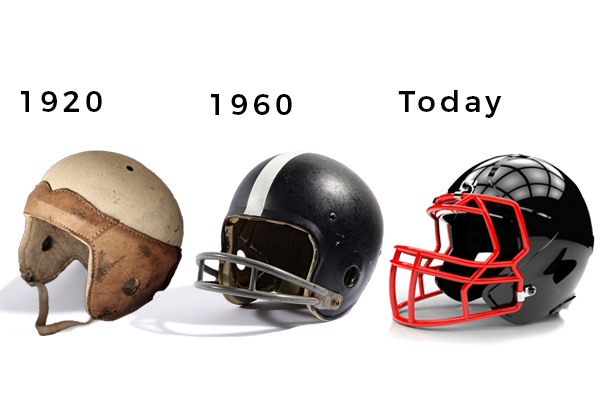The History and Evolution of Sports Equipment

Sports have been an essential part of human culture for centuries. From ancient times to the present day, people have participated in various sports, and with time, the equipment used in these sports has evolved significantly. This article will provide a detailed overview of the history and evolution of sports equipment, from its early beginnings to modern-day advancements.
The Evolution of Ball Games
Ancient Ball Games
Ball games have been played for centuries and were originally played using rocks or other natural materials. The ancient Egyptians, Greeks, and Romans played various ball games, including handball, which was played using a small ball made of leather or animal bladders.
The Invention of the Rubber Ball
In the 19th century, the invention of the rubber ball revolutionized ball games. This new material provided a softer, more flexible ball that could be used for a variety of sports. Sports such as basketball and volleyball were invented using the rubber ball.
Modern-Day Balls
Today, sports balls are made using a variety of materials, including synthetic materials, rubber, and leather. The modern-day soccer ball, for example, is made using synthetic materials, which provide a lightweight, durable ball that can be used on a variety of surfaces.
The History of Sports Shoes
Early Footwear
Early sports shoes were basic and often made using simple materials such as leather or animal skins. The ancient Greeks and Romans, for example, competed in athletic events barefoot. In the Middle Ages, shoes with spikes or studs were used to provide traction for running.
The Invention of Running Shoes
The first running shoes were invented in the 19th century and were made using rubber soles and canvas uppers. These shoes provided better traction and support for runners and quickly became popular among athletes.
Modern-Day Sports Shoes
Today, sports shoes are highly advanced and incorporate the latest technology to provide maximum comfort, support, and performance. Shoes such as Nike Air Max and Adidas Ultraboost use air and foam technology to provide cushioning and support for athletes.
The Evolution of Rackets and Paddles
Early Rackets and Paddles
Early rackets and paddles were made using simple materials such as wood or animal skin. These rackets and paddles were often used for sports such as tennis or table tennis.
The Development of Tennis Rackets
In the 1960s, tennis rackets were made using materials such as steel and aluminum, which provided a lightweight, durable racket that could be used for high-speed shots. Today, tennis rackets are made using advanced materials such as graphite and carbon fiber, which provide maximum power and control.
Modern-Day Rackets and Paddles
Modern-day rackets and paddles use advanced materials and technology to provide maximum performance for athletes.
The History of Sports Protective Gear
Ancient Protective Gear
Ancient sports such as wrestling and boxing involved the use of protective gear such as leather helmets and padded gloves. However, this protective gear was often minimal and provided little protection for athletes.
The Invention of the Bicycle Helmet
In the 1970s, the invention of the bicycle helmet revolutionized sports protective gear. This new piece of equipment provided better protection for athletes and helped reduce the risk of head injuries in sports such as cycling and skateboarding.
Modern-Day Protective Gear
Today, sports protective gear is highly advanced and incorporates the latest technology to provide maximum protection for athletes. Helmets such as the Giro Synthe MIPS and the Bell Super 3R use advanced materials and technology to provide maximum impact protection for athletes.
The Future of Sports Equipment
As technology continues to advance, the future of sports equipment looks promising. Future sports equipment is expected to incorporate advanced materials and technology to provide maximum performance and protection for athletes. Equipment such as smart helmets and wearable technology will allow athletes to monitor their performance and reduce the risk of injuries.



